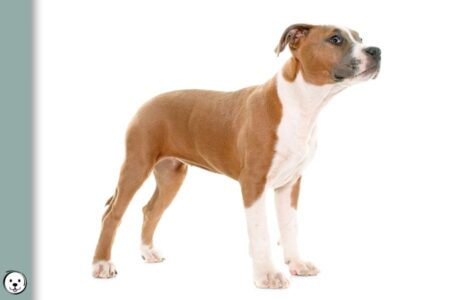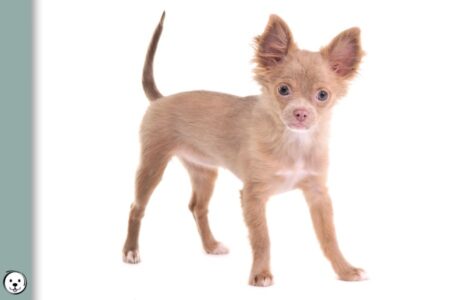What is the difference between ticking and merle in dogs, you ask? Well, ticking adds pigment to white spotting while merle removes pigment from areas with black or brown coat.
Both patterns can create blueish or grayish coat and are some of the most easily confused color patterns. For beginners, it can be difficult to tell the difference between ticking vs. merle.
In this article, we’ll go over the characteristics of both ticking and merle before talking about what makes these coat color patterns different and how you can tell them apart.
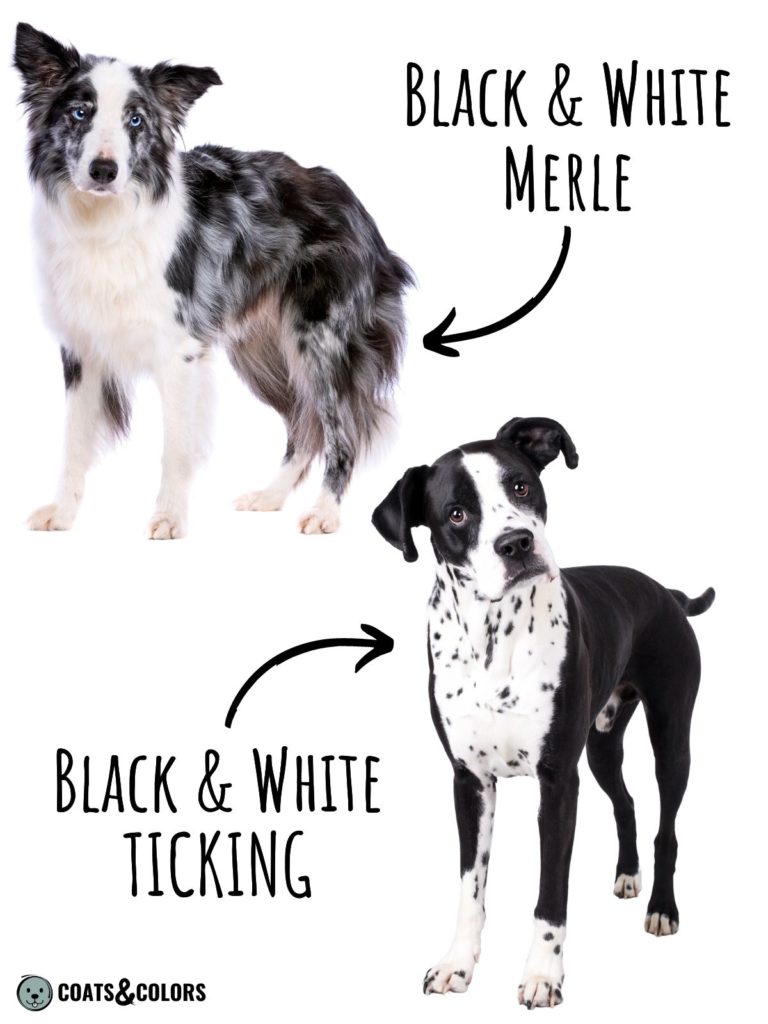
What Is Ticking?
Ticking refers to small dots of pigmented hair that are confined to areas with white coat. It creates moderate to heavy amounts of pigmented dots on any white background.
Patterns that behave in a similar way are roan and flecking.
Compared to ticking, roan adds pigment to single hairs creating a more evenly distributed pattern without distinct spots on white background. Dalmatian flecking adds larger rounder dots.
Roan and flecking are thought of as different genes or modified versions of ticking.
But for the sake of our blog post, we can group roan and ticking together because they share the same characteristics and are both just as often confused with merle.
What makes ticking special?
A dog needs some type of white spotting (which can come from piebald or Irish markings or whitehead patterns) in order to express ticking. Without white in his coat, a dog can’t express ticking.
He might still have it and pass it on to his offspring. But you won’t be able to see it.

Ticking never removes pigment.
Ticking can only add pigment back to white coat where there should be none.
At birth, you can’t see if a dog has ticking. At first, all white spotting will be solid white.
Only fully colored patches that will stay this way are already present at birth. Ticking will appear later and does not affect the areas that are already pigmented at birth.
Ticking starts to form gradually inside white areas of a dog’s coat only a couple of weeks after birth.
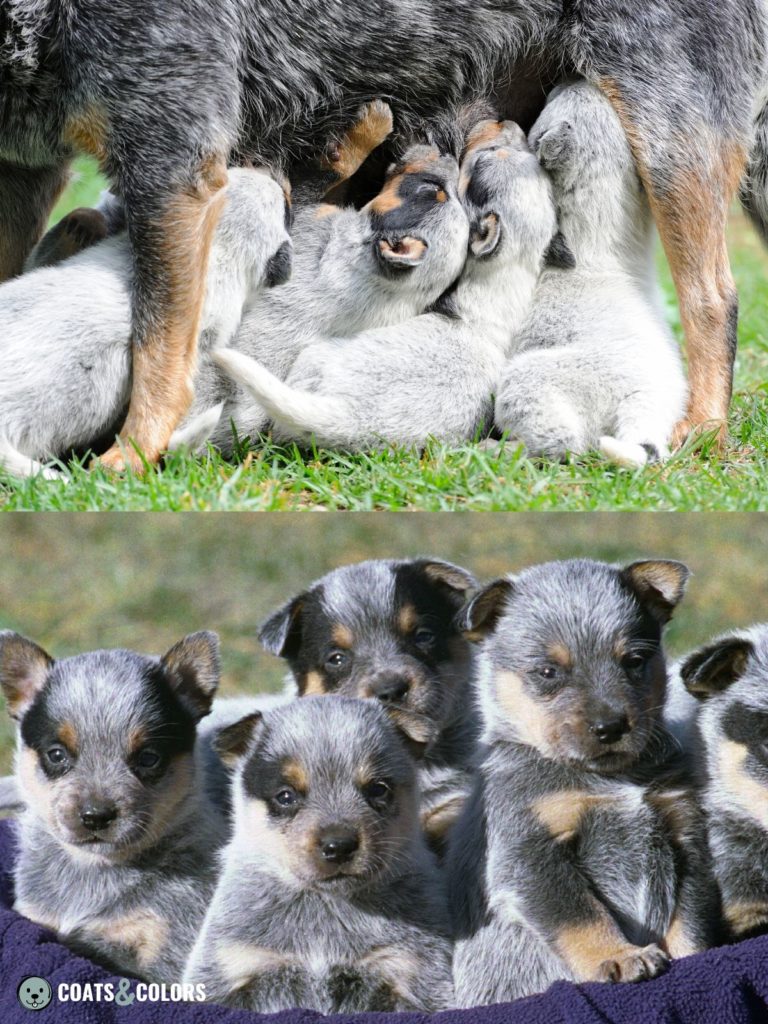
All the mottles or freckles on a particular dog will have the exact color a dog would have had at their location if it wasn’t for his white coat.
White covers up a dog’s pattern. And ticking brings back some of this color lost to white. Think of ticking as small windows in the white fur that let us look at what’s “underneath” the white.
Ticking, roan or flecking are commonly seen in breeds with moderate to large amounts of white in their patterns such as the Australian Cattle Dogs, Dalmatians and many hunting dog breeds such as English Cocker Spaniels, English Setters, German Shorthaired Pointers or Bluetick Coonhounds.
The genetics behind ticking and roan patterns are not yet fully understood. Currently, the gene responsible for ticking is called the T-Locus.
This gene is thought to determine the presence of ticking and its intensity.
Some dogs may have minimal ticking, with only a few scattered dots in their white coat. Others express heavy ticking with the most dots concentrated on their legs and muzzle.
Here are some examples of dogs with a ticking or roan pattern. All the mottled or speckled areas on these dogs were white at birth and would still be solid white if the dogs weren’t ticked/roaned! Also, note the solid and clearly non-merled black areas on these dogs:

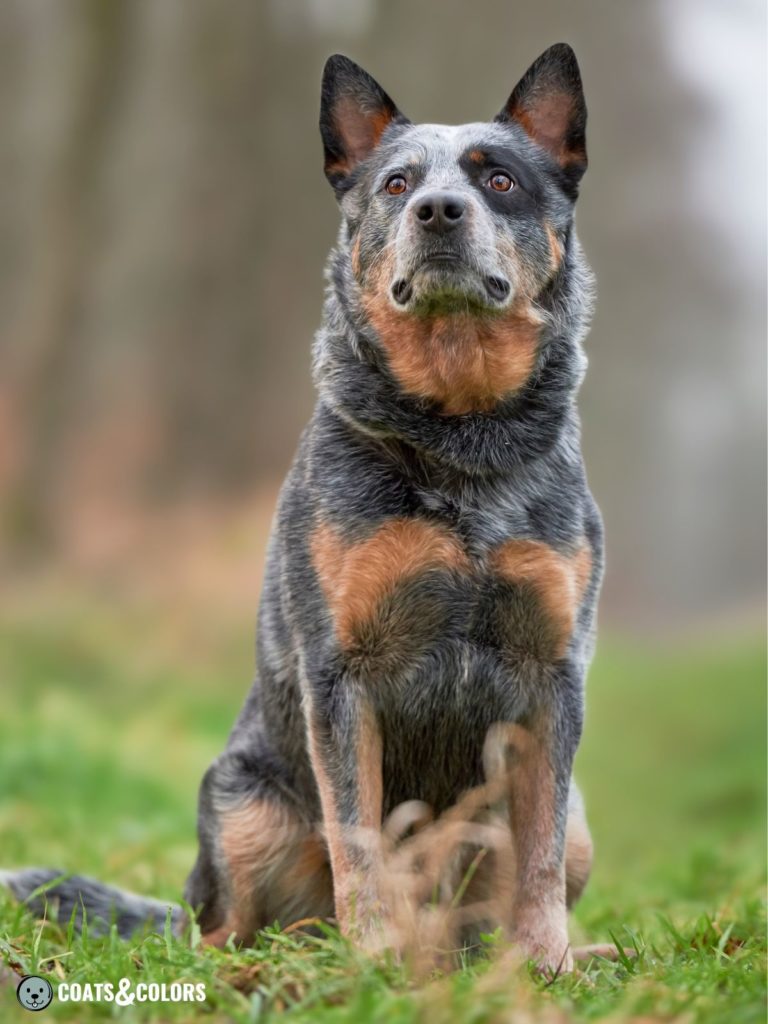

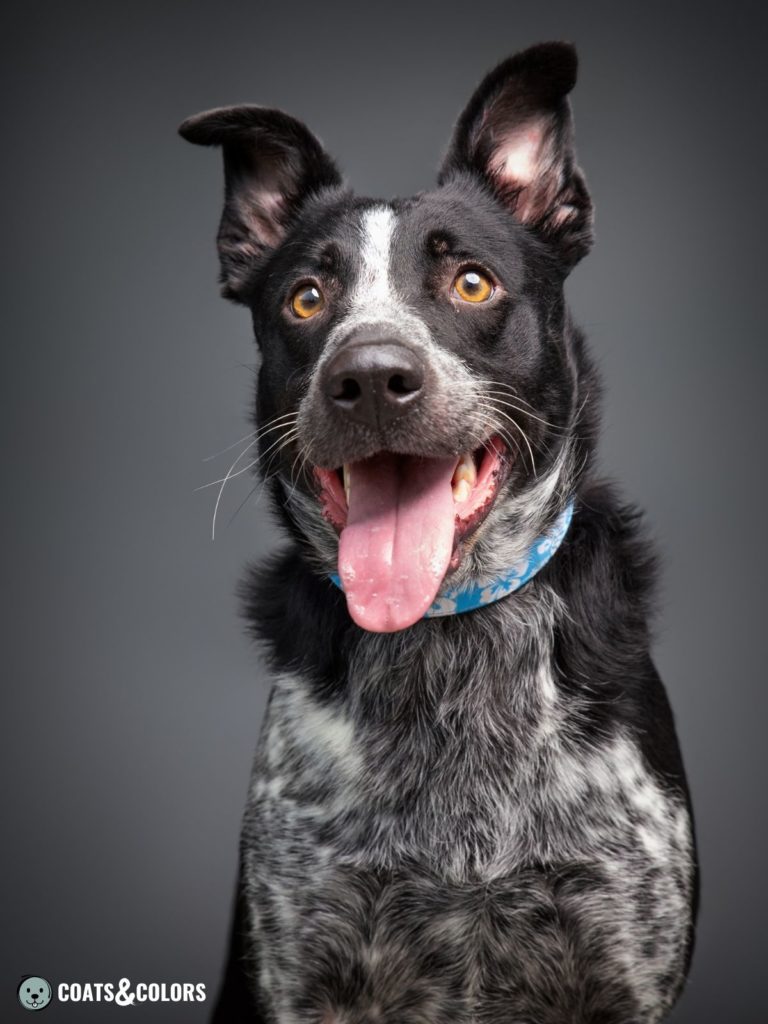
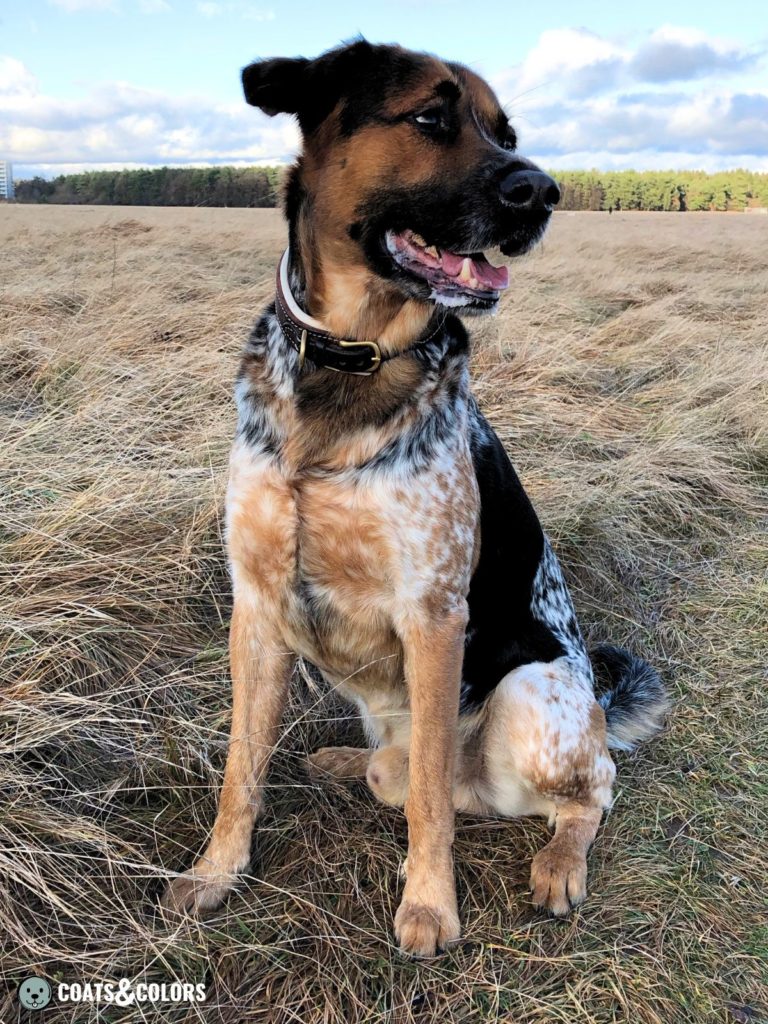
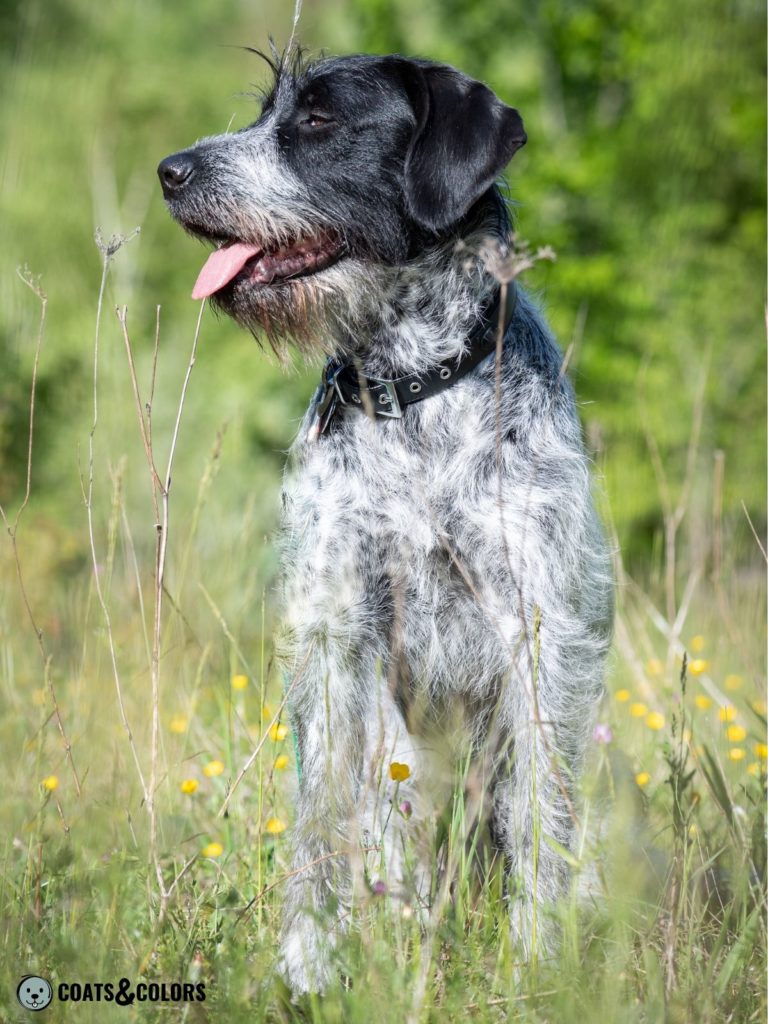
What Is Merle?
Typically, merle refers to a marbled pattern that is restricted to areas with eumelanin-pigmented coat where it dilutes small dots or large patches of pigment to lighter colors.
In its most extreme version, merle may even delete some pigment to white.
What makes merle special?
A dog needs eumelanin in its pattern to express merle.
Eumelanin is one of two pigment types seen in coat color patterns and refers to black pigment that may be modified to brown on a particular dog. Color dilution can turn black to blue or brown to lilac.
An individual dog can only ever produce one of these colors, black, brown, blue or lilac.
And without at least some areas with black (or brown, blue, lilac, respectively) in his color pattern, a dog can’t express merle.
A solid white or yellow dog may still be a non-expressing merle and pass the trait on to his offspring. But you won’t be able to detect it just by looking at the dog.
Merle never adds pigment. White coat will stay white.
Merle only removes pigment in areas where you would expect to see eumelanin.
Merle will dilute or lighten some black (or brown, blue, lilac) pigment in more or less random areas and turn it into a blueish, grayish, brownish or even whitish color.

When a dog expresses a merle pattern, it will be visibly present at birth. Some patterns may darken with age, but they will already be there on a newborn puppy.
Dog breeds that come with merle are typically dogs that have large areas of black or brown coat in their patterns such as Border Collies, Australian Shepherds, Beauceron or Shelties.
Not all types of merle express the same way, you can read up on merle genetics here.
But in a nutshell: Some dogs have a showy and loud blotchy pattern, while others have a tweed pattern with large diluted areas. Some dogs express a minimal merle pattern and some versions of merle can create a more uniform pattern to the point where it even may resemble color dilution.
In any case, merle does neither affect white spotting nor red markings.
For the sake of completeness: In very rare cases, merle can dilute some red pigment. But these are exceptions that are very rare and can be completely ignored for the purpose of this blog post.
Look at some examples of dogs with a merle pattern. All the patchy grayish areas would have been solid black if the dogs weren’t merle! Also, note the solid white spotting without ticking on these dogs:
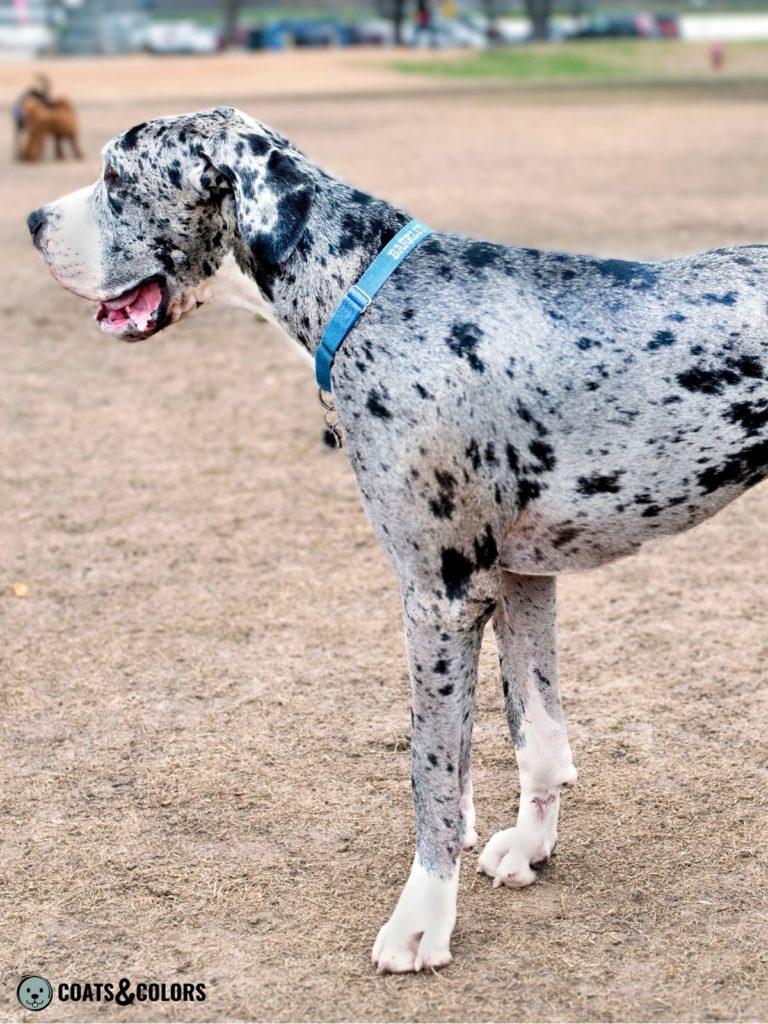
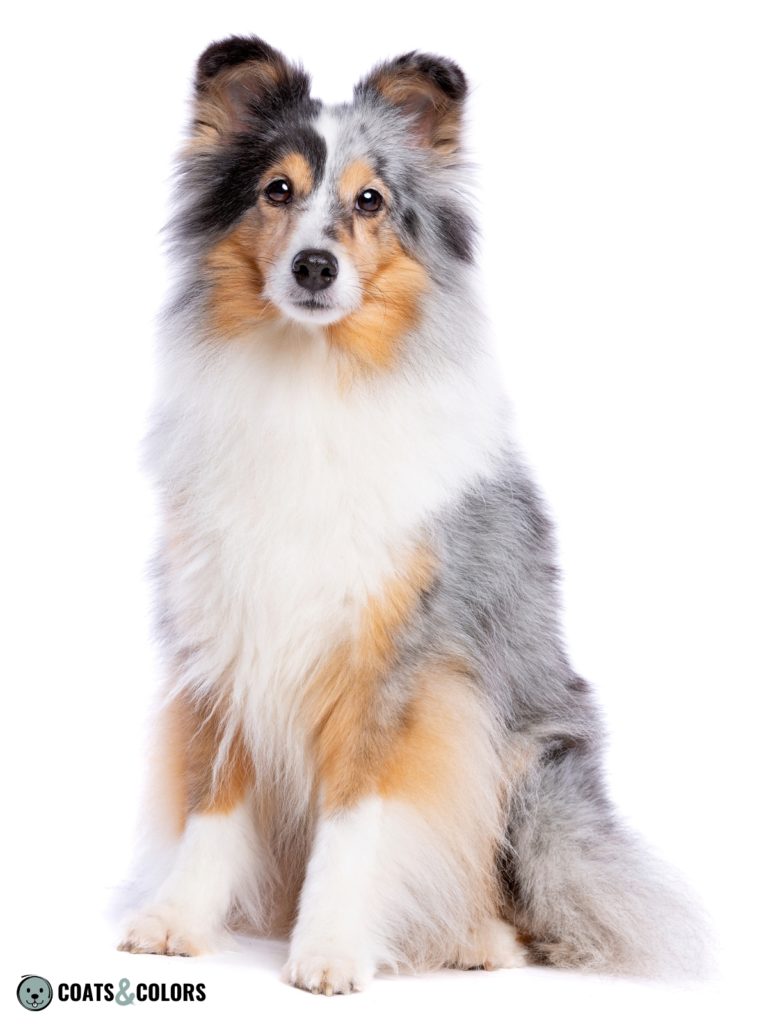
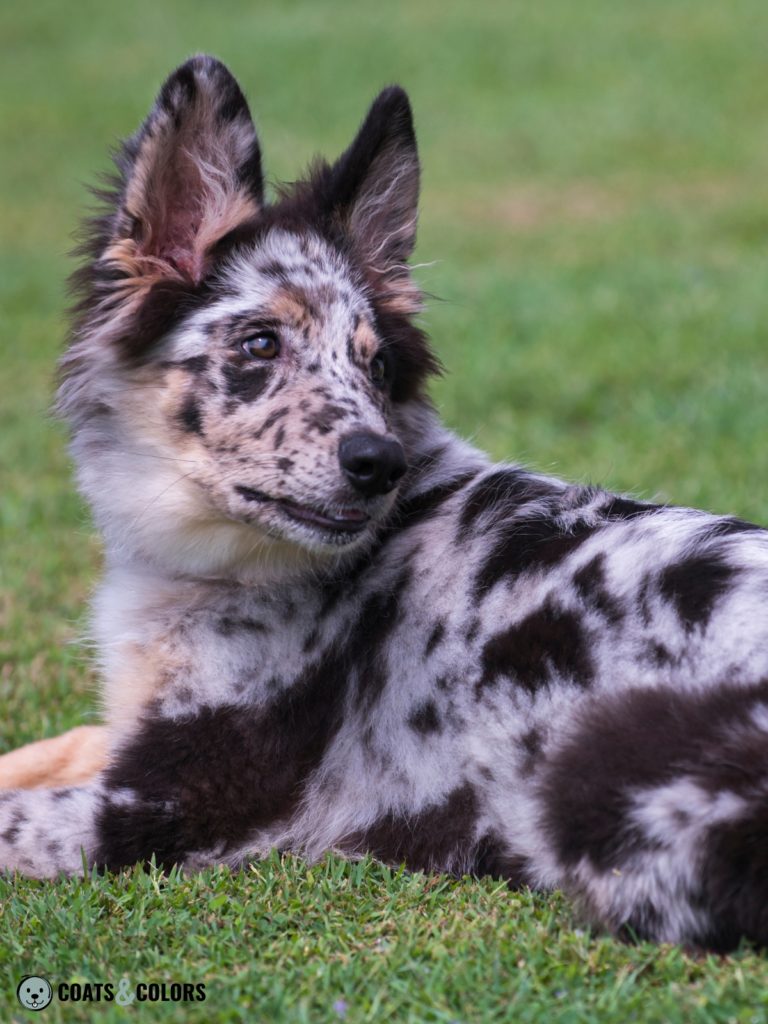


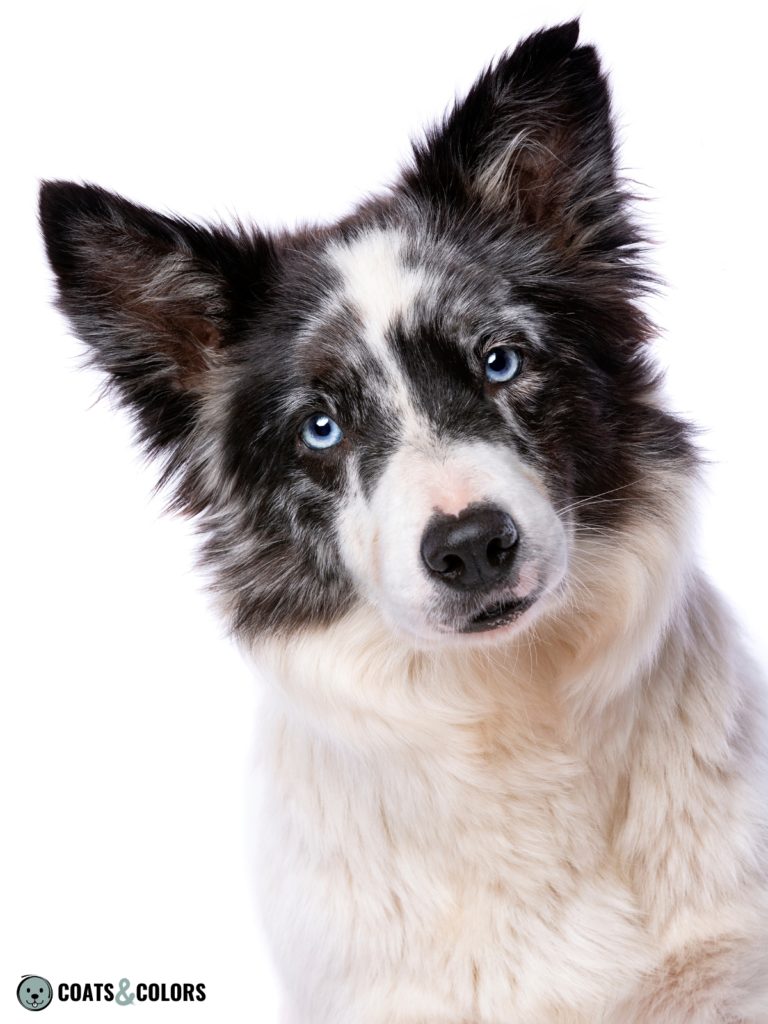
Ticking vs. Merle
Let’s make a side-by-side comparison of ticking vs. merle, ok?

The Sheltie is merle.
The ACD is mottled.
Ticking only affects white spotting. Merle (typically) only affects eumelanin.
Ticking adds pigment. Merle removes pigment.
Ticking will express the color of the original pattern. Merle causes dilute patches that may have different colors. Stronger versions of merle may delete pigment to white.
Ticking adds spots that are more or less round. Roan adds pigmented hairs. Merle dilutes pigment in random areas that often come with torn edges.
Ticking can be moderate to heavy. Merle comes with different patterns and varying degrees of color dilution such as atypical merle, classical merle to harlequin merle.
Ticking is not present at birth and develops gradually over time. Merle is present at birth.
Ticking on a black & white dog may look like “blue-ticked” because it creates a mixture of black and white hairs. Black merle may look like “blue merle” because it lightens patches of black coat to gray.
Ticking does not affect eye or skin color. Merle can cause heterochromia or butterfly noses on its own.
Ticking does not affect health. Merle can cause health-related issues.
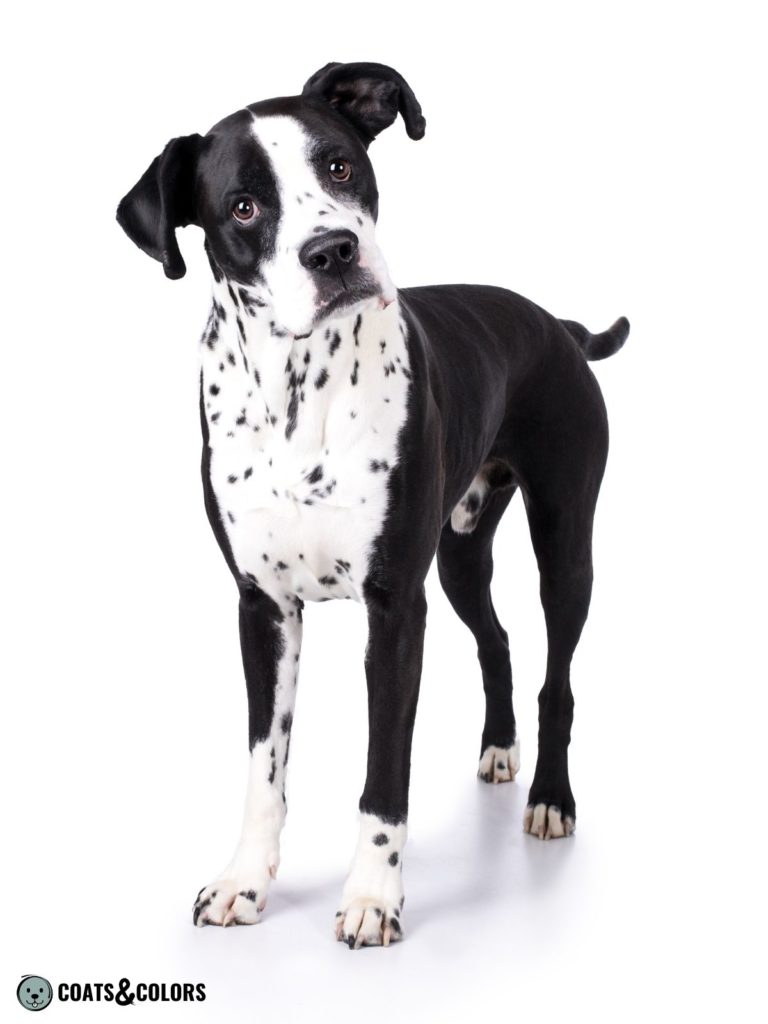
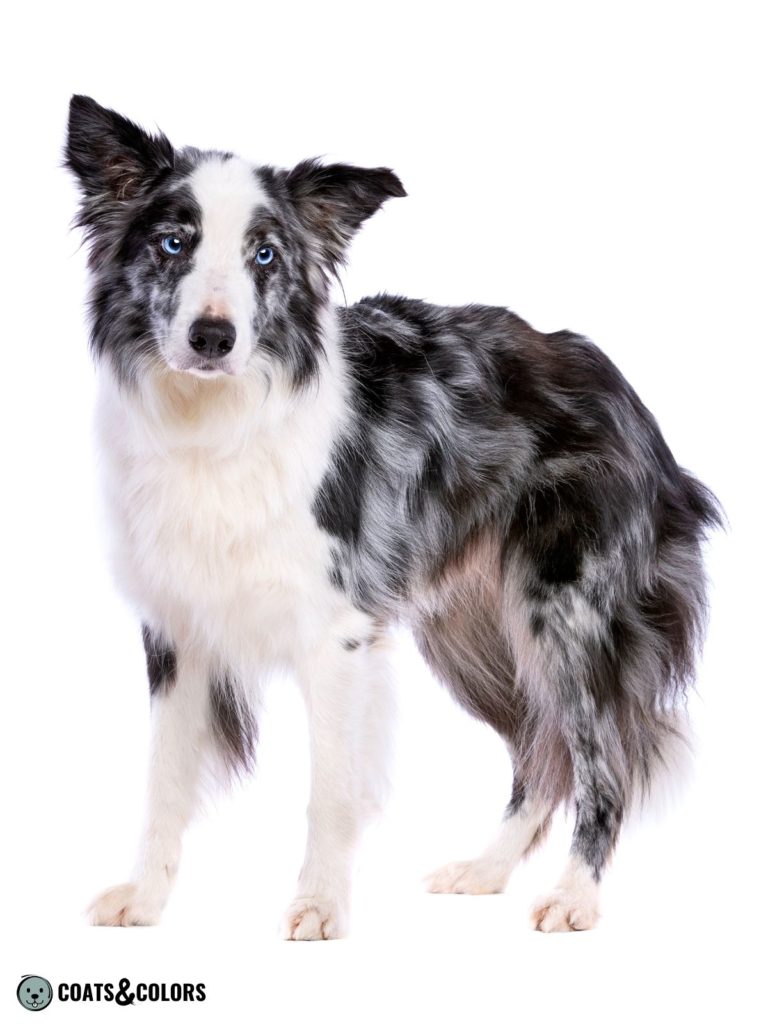
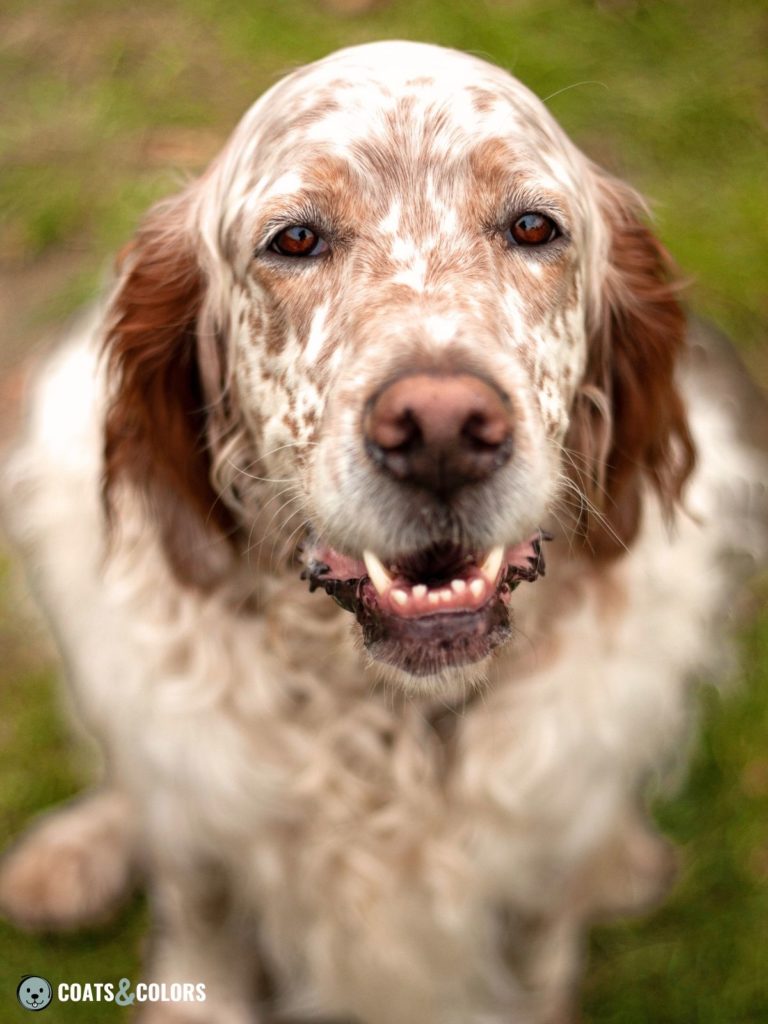

Both traits are controlled by different genes, see T-Locus and M-Locus. A dog can have one or both traits at the same time as long as he meets all the requirements to express both patterns.
Here are some drawings to illustrate the difference between merle and ticking:

NO merle
NO ticking
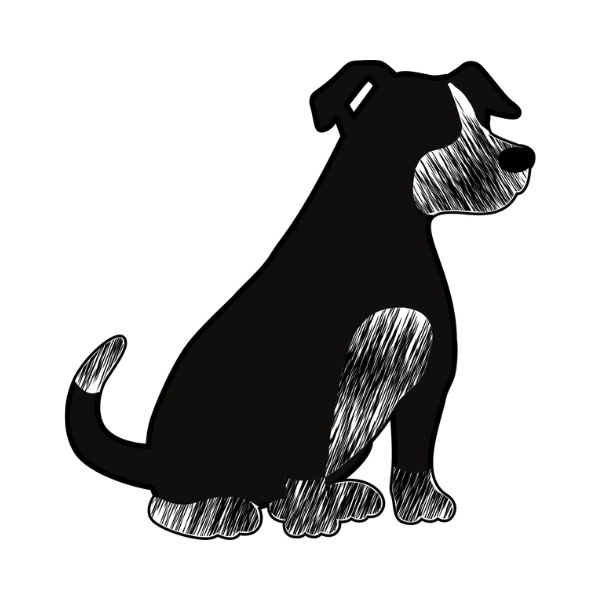
NO merle
ticking/roan

merle
NO ticking/roan
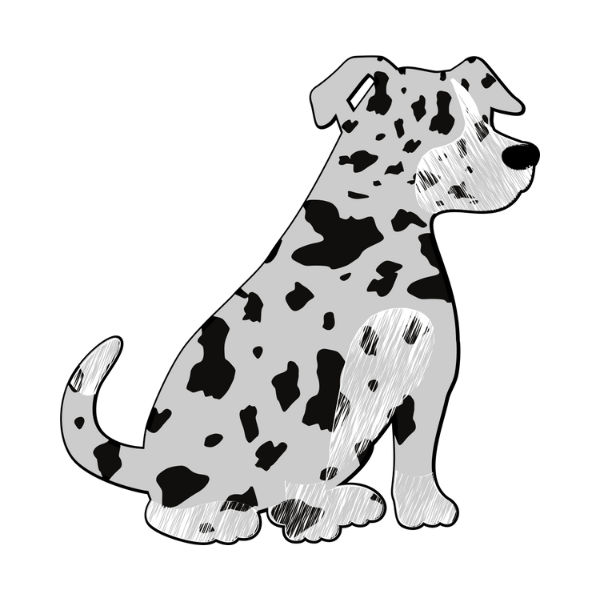
merle
ticking/roan

NO merle
NO ticking
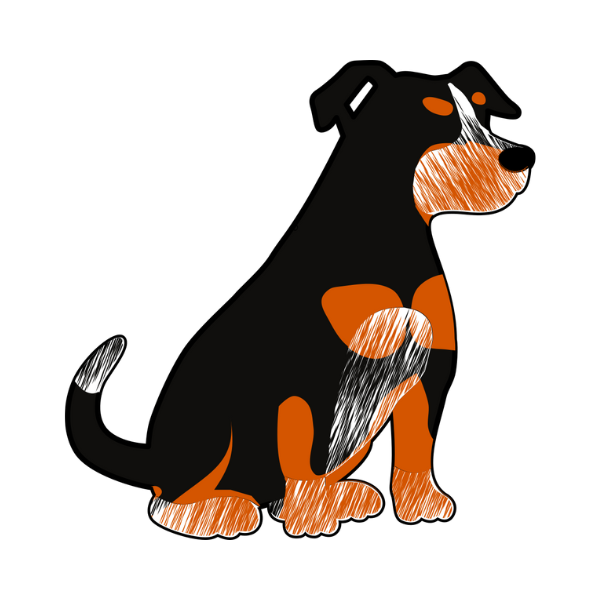
NO merle
ticking/roan
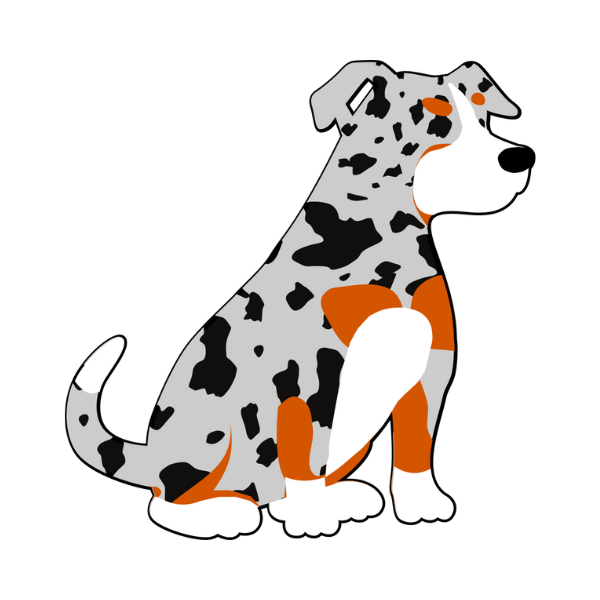
merle
NO ticking/roan

merle
ticking/roan
Learn More

Hi! I’m Steffi. I am a biologist and a big time dog nerd. You are curious about coat color genetics? You’ve come to the right place! Read more.




